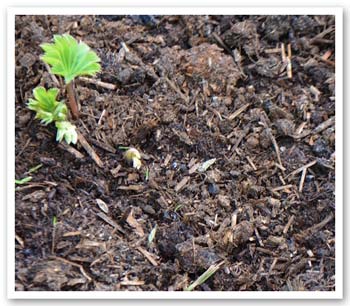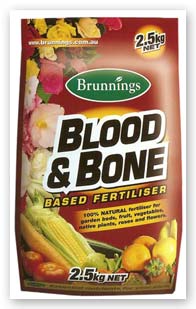The type of soil you have in your garden will limit what you are able to grow - unless of course you are prepared to put a bit of work in to improve it - then you’ll be able to grow just about anything well.
Soil naturally falls into three categories:-
Clay: a tightly packed, dense, porous, sticky substance that holds water and excludes air.
Sand: a loose, non-porous particle, quick draining material that also does not hold nutrients well either.
Loam: a well balanced mix of clay and sand.
 Obviously the best thing anyone can do with either clay or sand dominated soil structures is to add some of the one that is missing and mix it up well.
Obviously the best thing anyone can do with either clay or sand dominated soil structures is to add some of the one that is missing and mix it up well.
But all three soil types will improve greatly for the addition of organic materials like compost, sawdust or peat.
Organic materials like compost contain a lot of natural minerals and nutrients but they also break up the soil to allow air in and encourage worms to thrive. But organic materials do two opposing - but important things as well.
Firstly they provide pathways for the water to drain - which is good in heavy clay soils but they also provide porous materials to hold moisture in sandy soils. So as you can see, organic materials will improve just about any soil - especially by encouraging worms.
Worms are the greatest living natural soil conditioners you can find - as they improve aereation and drainage as well as chomping through organic materials to leave worm casts behind (worm poo) which is the best fertiliser in the world.
IMPROVING SOIL
In the first instance its worth getting a delivery of well balanced organic rich soil like "Greenlife Garden Mix" or something completely organic like "Mushroom Compost", "Cocopeat" or "Cow Manure".

 Then you’ll need to spread it over the soil you want to improve and fork it in.
Then you’ll need to spread it over the soil you want to improve and fork it in.
I also believe in sprinkling "Blood and Bone" on at the same time (before you fork it in) then the smell will be buried and the Blood and Bone can get to work quicker.
It is one of the best, totally organic slow release fertilisers delivering nitrogen to the soil over many months along with plenty of calcium and phosphorus from the bonemeal.
 If you think that you have not got a good natural worm population then now is also a good time to buy a bucket (or two) of worms. They can be spread across the area you are working on where they will quickly bury themselves and start growing and breeding.
If you think that you have not got a good natural worm population then now is also a good time to buy a bucket (or two) of worms. They can be spread across the area you are working on where they will quickly bury themselves and start growing and breeding.
A good gardener doesn’t need to dig the soil very often - if there are worms then they’ll do the job for you.
Watch out for acidity - too much an it will inhibit mineral uptake. A simple ph meter is cheap to buy (from the Garden Shop here on GardensOnline) but it will reward you by letting you know how acid your soil is. Add some Dolomite in these cases, which is just calcium and magnesium, it will sweeten acid soil and help plants gain full benefit of the minerals that are there.
For on-going soil maintenance regular mulching is the best way to keep up a regular supply of organic materials to the soil. A good coarse mulch like woodchips or chopped up prunings will provide a great protective layer on top of the soil. This will maintain a more even temperature for the roots, aid moisture maintenance and also discourage weeds.
In time the mulch will start to de-compose and the worms will drag bits of it down into the soil (good - see above !). When this happens all you need to do is to (sprinkle on some more blood and bone then) top up your mulch. It will look nice and fresh and of course provide the next layer of soil food as time goes by.